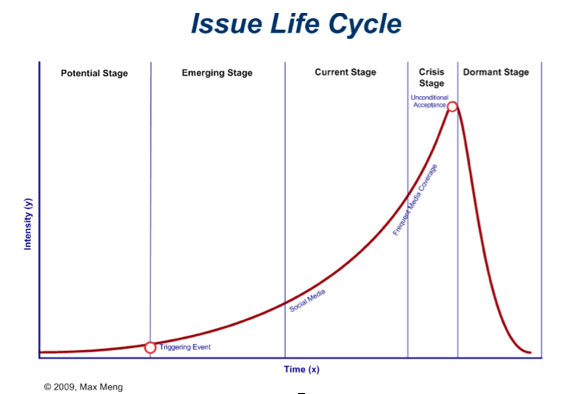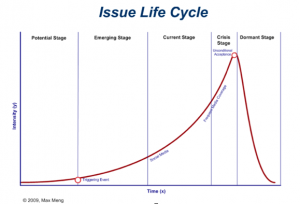Don’t get in a full fledged crisis. Every business has its stressful situations and rainy days. This is something a business cannot avoid. What a business can avoid is turning a rainy day into a category 5 cyclone.
There are many toxic thoughts that you might have that you are completely unaware or that spells D-I-S-A-S-T-E-R for your company, particularly if your business begins to grow or you have just experienced a lot of success. These toxic thoughts are the catalyst for any major preventable disaster a business experiences. Learning about these toxic thoughts will not only make you aware and alert of any problem in business, but you can become your own PR agency in your business.
Without further ado, here are some of the most toxic thoughts that can kill a business dead on its tracks
Thought #1 “That Crisis will never happen to me”
If you don’t take steps to prevent the disaster yes it will happen to you. In life when we see someone struggling through life, we sometimes can see the solution from afar, but when we are caught in the same situation, we may not know what to do. This is exactly the same in an business environment: It is easier said than done.
In the age of social media, there is very little wiggle room to hide and news travels faster. All it really takes is a whistle-blower in the form of an employee to type onto Facebook. Now, if their complaints are unwarranted and untrue you still must take some form of action because it still harms the image of a business. If what they are saying is true however, you have entered into full crisis mode and the thing you thought would not happen to you just happened.
Thought #2 “Let’s keep our stakeholders in the dark”
To me this thought is the equivalent of the child prank of “Why are you hitting yourself?” This is just asking for an issue in business to manifest into a crisis. When PR and lawyers get involved with your company, they biggest desire is to only have to resolve small issues that have not had any real impact in your business, they do not want to resolve the big issues that cause you and them so much time and stress. They will hate it even more if you did not tell them about the issue you were trying to prevent.
Thought #3 “ No Comment”
If you are unfortunate enough to encounter a disaster that has caught media attraction, the worst thing someone can say is “No Comment”. The reason for this is that stakeholder and the general public what to know how this disaster started and what the business is doing about it to remedy the disaster. If you don’t say anything, stakeholders and consumers will resent the company and think it’s hiding something even more sinister.
Think of this situation between business and stakeholders as a relationship between two spaces that has hit the rocks. The relationship can be saved and you may even grow stronger if you reveal what the trouble is between yourself and the situation. If not, except your relationship to worsen and have long term detrimental impacts.
Thought #4 “We are one of the biggest companies in the world, we are untouchable”
I can guarantee that that was the thought in the heads of Enron, Worldcom and Lehman Brothers.
As soon as a business develops this delusion and believes it, it spells the beginning of the end. Normally, this thought leads to fraudulent activity or some other unfair+ business practice. It can range from lending mortgage bonds to people who could not pay them (Lehman Brothers) to simply making up figures in the accounting books (Enron). These types of scandals are no hidden forever and if unchecked, it will lead a company to bankruptcy at best and imprisonment for white collar crimes at worst.
Conclusion
So these are just some of the thoughts that managers have that can harm a business. There are more but what I always recommend is constant self-awareness. That way, your mind is always based in reality. You can become your own PR machine. If you don’t lie to yourself, whether you succeed or fail in business, you will always be able to at yourself in the mirror with a clear conscience
Nelson Cumming is an enthusiastic business blogger with AdrienneMcLean.com with a keen interest in Marketing and PR.
Adrienne McLean DTM – SpeakersTrainingCamp International Instructor and the Founder of The Speakers Practice – Adrienne specialises at
The Speakers Practice helping clients to confidently deliver presentations for maximum impact for sales presentations, pitching to Investors, promotional presentations etc.
Adrienne has been training presenting to camera programs since 2012 and has been coached by Lou Bortone – US Video Marketing Expert.
You can contact Adrienne on adrienne@thespeakerspractice.com.au or ring on 0414 367 960.




